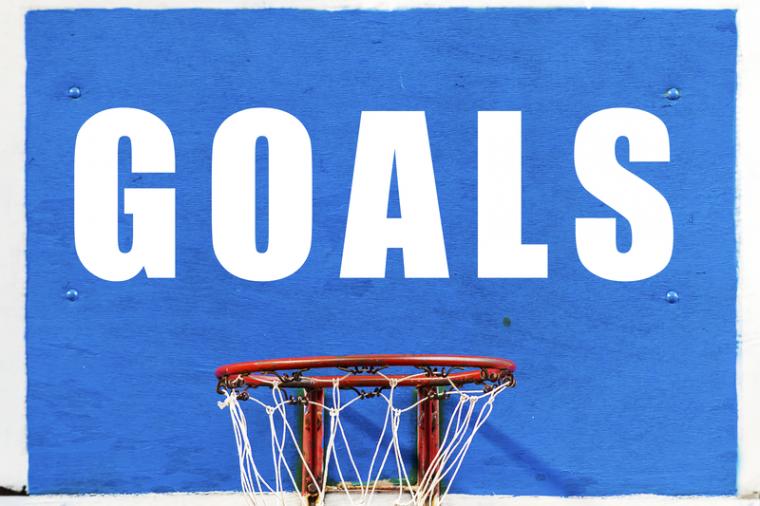

Maybe all you know about sports in prison was learned from the classic 1970s Burt Reynolds movie, The Longest Yard (and what critics term its unnecessary mid-2000s remake with Adam Sandler). In reality, though, recreational and competitive sports leagues are alive and well within prison walls, providing a valuable outlet for inmates – and are being called a major player in helping to avoid recidivism.
And don’t think it’s gone unnoticed. As a writer from Deadspin noted, “The next time I commit a felony, I think I'll do it in California. It turns out that San Quentin has a fabulous tennis program.” In fact, the writer notes, “There are beautiful courts and real tennis pros coming in to play the guys who've practiced for 20 years while doing their time for murder.” (San Quentin, as it turns out, has a number of programs – running, basketball and more – and seems to be leading the way in terms of streaming sports into the prison experience).
Sometimes, prison sports are organized into leagues, complete with tournaments and small prizes. Sometimes, they serve as a training ground, as it were, for events in the larger world. Consider, for example, the story of Markelle Taylor, who competed in the 2019 Boston Marathon – after doing almost every single bit of his training on a quarter-mile track of asphalt, gravel and dirt with six 90-degree turns, within the walls of the prison where he had served 7 years and 7 months after being found guilty of second-degree murder. Global Sport Matters carried the story, noting that it was hardly unique:
“Sing Sing Correctional Facility in New York fielded the Sing Sing Black Sheep football team in the 1930s. As early as 1912, prisoners played baseball at Atlanta's Federal Penitentiary, and other baseball prison programs soon sprang up at Sing Sing and San Quentin in California. The Sing Sing baseball team even played an exhibition against the 1929 New York Yankees team that featured Babe Ruth and Lou Gehrig. Since 1931, prison rodeos have entertained inmates and the general public. The Texas Prison Rodeo was held in Huntsville, Texas, from 1931 until 1986, but ended due to budgetary concerns. The Angola Prison Rodeo at the Louisiana State Penitentiary opened in 1965 and is still running. It has grown so popular the prison built a 10,000-seat arena in 2000.”
While some prison sports are played on teams (an enormous contributor to moral welfare, according to a slew of academic papers on the subject), others are singular pursuits: running, tennis and so forth. Global Sport Matters points out that Dave McGillivray, the race director of the Boston Marathon, started the first and only USA Track & Field-sanctioned running club inside a prison at Walpole State Prison in Massachusetts in the 1980s. His association with the prison started on June 14, 1980, when McGillivray was the only non-inmate to run an 8-mile race against 20 to 30 inmates.
Some correctional institutions will sanction sports programs – with parameters. Some require the sport in question not be a combat sport (like wrestling, boxing or martial arts) or that it not involve any equipment that could be used as a weapon against others in the heat of anger (like a baseball bat). In these cases, volleyball and basketball are popular choices. Some programs, like Prison Yoga, simply exist to help inmates learn calming and relaxation techniques that can assist them with stress relief – either inside or outside cell walls.
Others, however, such as the London-based 3Pillars Project, an intensive 8-week rugby program offered in five British prisons, embraces the need for activity, and for physical contact. (The rugby program uses a holistic approach to assist inmates by providing mentors who develop action plans with participants, conduct anger management discussions and leadership coaching, assist with CV writing, and discuss course work and life in general). Another UK-based program, discussed in this article by the Alliance of Sport, uses soccer and boxing as its cornerstones.
The receptiveness of any given correctional institution to sports programs will vary; some organizations provide guidance on how to approach institutions and propose a program. Church programs, public organizations like the RestartSports program and professional sports teams have donated money and sporting equipment and have even donated their time to coach or play against prison teams.
The World Baseball Softball Confederation (WBSC) noted that the Italian Baseball Softball Federation partnered with the National Department for Prison Administration (DAP) to introduce Baseball5 (read a description of Baseball5 here) in the Rebibbia prison in Rome. The project, Sport in a Prison-Return to Home Plate, was tested on 25 inmates, some of whom were eventually able to act as umpires. (And since the sport is played in a smaller space than traditional baseball and uses no bats – or gloves, for that matter – it caught on and achieved a good following).
According to the article, “Sports as Rehabilitation for Prisoners,” the Golden State Warriors began visiting the San Quentin Prison (which, as it turns out, is one of the leaders in the sports-as-therapy philosophy) in 2013 and have been playing basketball with inmates ever since. The professional players began playing against the inmates because they realized the participation was bettering the inmates' social interaction and making the inmates feel human again.
Many prisoners who participate in sports while behind bars, and who are released once they have served their sentences, are encouraged by mentors to find leagues, clubs and other organizations to continue playing.
After all, according to the Alliance of Sport, such participation “gives them consistent and ongoing access to the coaches, positive role models and the supportive social environment that they had while in prison, which can act as a distraction from reoffending and previous negative peer groups and lifestyle habits.”

